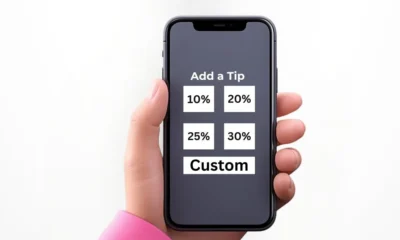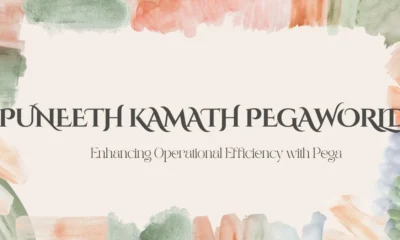HEALTH AND FITNESS
Why Collaborating Physicians Matter and How NPs Can Connect with One

As the healthcare landscape evolves, the role of nurse practitioners (NPs) continues to expand across a broad range of clinical settings. Yet, despite their growing autonomy, many states still require or strongly encourage collaborative agreements with physicians. These partnerships not only fulfill regulatory requirements but also enhance patient outcomes through the synergy of shared knowledge and clinical judgment. A collaborating physician brings a level of oversight and clinical guidance that can be especially crucial when dealing with complex or unfamiliar cases.
Beyond compliance, collaborating physicians serve as valuable mentors to nurse practitioners entering independent or semi-independent practice. This is particularly relevant in specialized fields or rural areas where access to specialists may be limited. Physician’s experience can help guide NPs through diagnostic dilemmas, treatment nuances, and system navigation challenges that could otherwise hinder efficient patient care. As a result, the collaboration fosters a learning environment that benefits both the practitioner and the patient.
Equally important is the perception of professionalism and legitimacy that a physician partnership offers. In many healthcare environments, including insurance and hospital systems, having a named collaborating physician can open doors to credentialing, referrals, and additional opportunities. This alliance often instills greater patient trust and assures stakeholders that the care being provided adheres to high clinical standards. Ultimately, the collaboration strengthens the NP’s role in the healthcare delivery ecosystem.
The Value Proposition for Nurse Practitioners
A strategic collaboration with a physician can elevate the practice of a nurse practitioner in more ways than one. First and foremost, it provides a clinical safety net that can be crucial when facing unfamiliar or high-risk medical situations. While NPs are trained to handle a wide range of patient concerns, the ability to consult with an experienced physician allows for more confident decision-making. This added layer of expertise contributes to better diagnostic accuracy and more comprehensive care planning.
Additionally, collaborating physicians can enhance the reputation and credibility of an NP’s practice, particularly in communities that may be hesitant about non-physician-led care. When patients see that a nurse practitioner works in tandem with a physician, they are more likely to feel reassured about the quality and safety of the care they are receiving. This collaborative structure can also ease administrative burdens, as physician input may be necessary for billing, documentation, or regulatory compliance in certain jurisdictions.
From a business standpoint, these partnerships often create new growth opportunities for nurse practitioners. Practices that involve collaborating physicians can expand service offerings, accept more complex cases, and potentially attract a wider patient base. For NPs looking to open or scale private practices, the inclusion of a collaborating physician not only enhances clinical depth but also strengthens the overall marketability of the practice.
Practical Ways to Establish a Collaborative Relationship
Finding the right collaborating physician can be a daunting task, especially for nurse practitioners who are new to independent or entrepreneurial practice. One effective strategy is to tap into professional networks, including local medical societies, alumni associations, and NP organizations. These platforms often facilitate introductions and provide vetted leads for potential collaborators. Making use of these resources can dramatically reduce the time and uncertainty involved in identifying suitable physicians.
Online platforms have also emerged as reliable tools in this space, offering directories and matching services for NPs seeking collaborative agreements. Navigating the process of identifying the right collaborating physician and understanding the practical and professional advantages of such relationships can make a meaningful difference in outcomes. By approaching these efforts with a clear strategy and a strong awareness of what makes a collaboration successful, NPs can enter conversations and negotiations with greater confidence and preparation.
Cold outreach is another avenue that should not be underestimated. Nurse practitioners can research local clinics or private practices and approach physicians directly with a well-prepared proposal. This may include a brief professional background, proposed terms of collaboration, and mutual benefits. Although this method may require more effort and persistence, it can lead to meaningful and enduring professional partnerships when executed thoughtfully.
Legal and Regulatory Considerations
Before formalizing any collaboration, nurse practitioners must understand the regulatory environment governing such agreements in their state. Scope-of-practice laws vary widely across the United States, with some states requiring direct supervision, while others mandate only a written collaborative agreement. Ensuring compliance with these laws is essential not only for legal operation but also for safeguarding one’s professional license.
Legal counsel can be invaluable when drafting or reviewing collaborative agreements. These contracts often cover topics such as clinical responsibilities, communication protocols, liability coverage, and termination clauses. Inadequate or ambiguous agreements can lead to disputes, so investing in sound legal advice upfront is a prudent strategy. This ensures both parties are clear about expectations and obligations, thus minimizing risk over the long term.
Additionally, state medical boards and nursing boards often publish guidelines and templates for collaborative arrangements. These resources serve as excellent starting points for nurse practitioners who are new to this process. Reviewing such documentation allows both parties to understand their respective responsibilities and avoid compliance pitfalls. Ultimately, a well-structured agreement supports a healthy and productive working relationship.
Financial Structures and Compensation Models
Establishing a fair compensation model is often a critical step in building a sustainable collaboration. In many cases, collaborating physicians receive a monthly stipend or a percentage of revenues in exchange for their role. This compensation should reflect the physician’s time commitment, level of involvement, and liability exposure. While rates vary by region and specialty, both parties should agree on terms that feel equitable and clearly documented.
Some collaborations are structured more flexibly, with compensation tied to specific services like chart reviews, clinical consultations, or prescriptive oversight. In such cases, transparency is key. Nurse practitioners should track the scope of work and clarify billing practices to ensure mutual understanding. Failing to address these details can lead to disputes that compromise the partnership and potentially disrupt patient care.
It’s also worth noting that some collaborating physicians may view the arrangement as a form of mentorship or professional development rather than purely financial. In these instances, other incentives such as networking opportunities, co-branding, or shared research projects may be appealing. Regardless of the compensation model, open communication and mutual respect should serve as the foundation of any agreement.
Communication Strategies for Long-Term Success
Once a collaborative relationship is established, maintaining open and effective communication becomes essential for long-term success. Regular check-ins—whether virtual or in person—help ensure that both parties remain aligned on clinical protocols, patient care strategies, and administrative responsibilities. These meetings foster trust and provide a forum for addressing concerns before they escalate into bigger issues.
Clear documentation protocols are equally important. Both the NP and the physician should agree on how clinical decisions, patient notes, and medication approvals are recorded and reviewed. Utilizing shared electronic health record (EHR) systems or secure communication platforms can streamline this process and reduce the risk of miscommunication. Setting expectations early around these logistics creates a smoother workflow for everyone involved.
Professional boundaries and mutual respect must also be carefully maintained. While NPs often operate with a high degree of independence, deferring to the collaborating physician when appropriate helps sustain a respectful partnership. At the same time, physicians should recognize and support the NP’s clinical expertise and leadership. A balanced relationship built on collaboration rather than hierarchy is more likely to endure and thrive.
Evolving the Relationship Over Time
As nurse practitioners gain experience and their practices mature, the nature of their collaboration with physicians may naturally evolve. Initially, the physician may play a more hands-on role, providing regular oversight and clinical input. Over time, however, the NP may require less direct involvement as confidence and proficiency increase. It is important to revisit the terms of the agreement periodically to reflect these changes.
Many NPs eventually consider scaling their practices or entering new specialties, which may necessitate a new type of collaboration. A physician who was once ideal for general practice may no longer be the best fit for a subspecialty or expanded service line. Regularly evaluating whether the existing collaboration still aligns with the NP’s goals ensures that both parties continue to benefit from the relationship.
Finally, succession planning is a smart and often overlooked aspect of collaborative practice. If a collaborating physician retires or relocates, NPs need to have contingency plans in place to avoid disruption. Proactively identifying backup collaborators or transition pathways can safeguard business continuity and maintain the integrity of patient care. By thinking strategically about the future, NPs can build resilient partnerships that adapt to the evolving demands of modern healthcare.
-

 BIOGRAPHY6 months ago
BIOGRAPHY6 months agoBehind the Scenes with Sandra Orlow: An Exclusive Interview
-

 HOME1 year ago
HOME1 year agoDiscovering Insights: A Deep Dive into the //vital-mag.net blog
-

 HOME1 year ago
HOME1 year agoSifangds in Action: Real-Life Applications and Success Stories
-

 BIOGRAPHY1 year ago
BIOGRAPHY1 year agoThe Woman Behind the Comedian: Meet Andrew Santino Wife




























